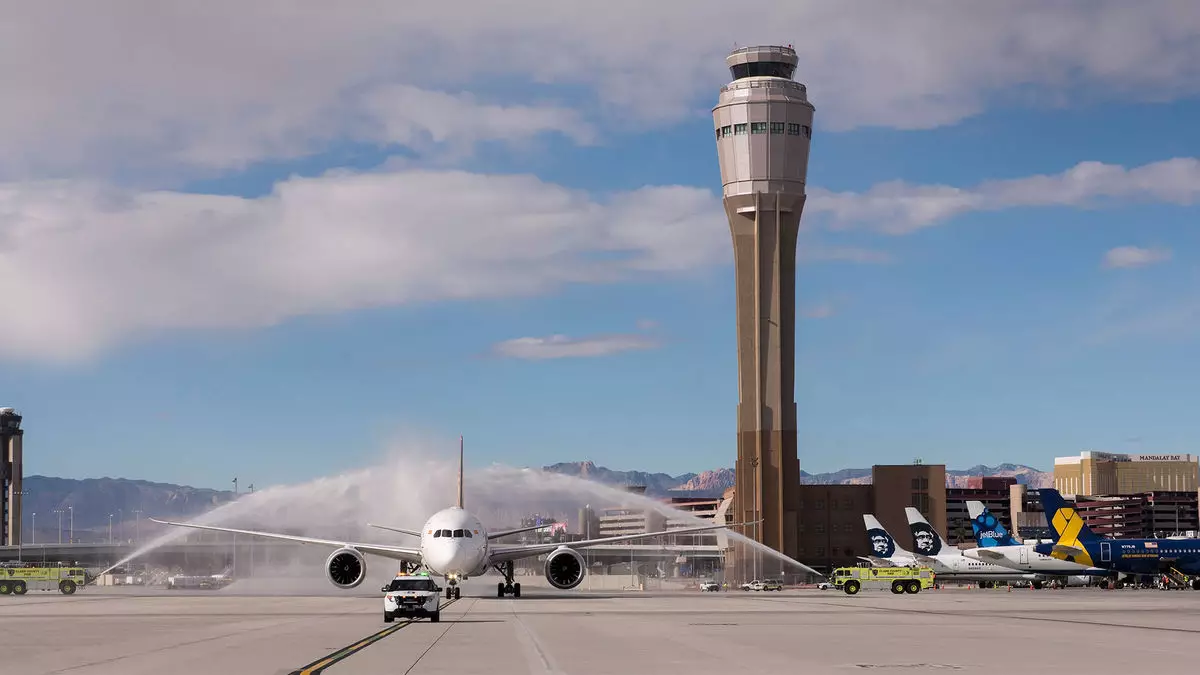The Clark County Commission is actively pursuing improvements to Harry Reid International Airport, aiming to future-proof one of Nevada’s essential transport hubs amid growing passenger numbers. Recently, the County’s Department of Aviation outlined an ambitious plan that includes adding 26 new gates to Terminal 1—an enhancement designed to accommodate the increasing traffic demands projected for the airport. This expansion would raise the total number of gates in Terminal 1 to 65, thereby enabling more efficient operations while addressing the outdated infrastructure.
Traditionally, airports like Harry Reid have struggled to keep up with rising passenger levels, and this latest initiative is a clear acknowledgment of that challenge. With 57.6 million passengers recorded in 2023, representing a 9.4% increase from the previous year, the urgency for modernization is palpable. Despite the notable success of Terminal 3, which spanned four years and $2.4 billion to complete, the reality remains that Terminal 1 is not adequately equipped to handle today’s demands. The expansion aims not only to add physical capacity but also to revamp the aging design that has inhibited operational effectiveness.
The current state of Terminal 1 has been termed inadequate by stakeholders, emphasizing that the existing facilities are insufficient for the burgeoning passenger needs. Bryant Holt, the managing director of planning for the County’s Department of Aviation, stated that the outdated design and structure of Terminal 1 have necessitated a modern overhaul. The renovation involves demolishing a section once occupied by the previously existing Terminal 2 to build an additional 46,000 square feet of space.
The new terminal layout promises operational functionality improvements, such as larger hold rooms and advanced wayfinding technology, enhancing the overall passenger experience. Such changes are essential for alleviating bottlenecks and confusion that arise particularly in managing the steady influx of travelers. This highlights an inherent tension between capacity and functionality, revealing that merely increasing the number of gates is not sufficient; a comprehensive rethinking of workflow and passenger convenience is imperative.
Presently, Terminal 1 handles 75% of airport traffic, while Terminal 3 manages the remaining 25%. Consequently, prioritizing an equitable distribution of passenger flow between the two terminals is vital for improving efficiency. Not only does this balance enhance user experience, but it also diminishes clutter, especially given that Terminal 3 is planned to effectively operate as the new ‘Terminal 2.’ The redesign of the ticketing and baggage handling systems, along with the introduction of express elevators, will further streamline the process, making air travel more user-friendly.
The proposed changes also include a new roadway configuration that aims to separate commuter traffic from airport traffic. This is particularly important, as traffic congestion often leads to delays, directly affecting flight schedules and creating frustration among travelers. Holt mentioned that these improvements would ensure a seamless experience not only for passengers but also for airport operations at large.
While updates to Harry Reid International Airport are crucial, officials are concurrently progressing with plans for a supplementary airport approximately 30 minutes from Las Vegas, set to open by 2037. This future facility aims to further alleviate congestion, making way for new air routes that the existing infrastructure can no longer support. The Federal Aviation Administration (FAA) has already deemed the initiative necessary, paving the way for collaboration among federal, state, and local agencies regarding land use and airspace management.
The expansion at Harry Reid may be seen as a temporary fix, primarily aimed at coping with immediate passenger flows while also laying the foundation for a long-term solution. As regional airports increasingly contend with higher passenger volumes, Szydelko raises a crucial point: the future of air travel in Southern Nevada will hinge on multiple investments—not simply in facilities but also in connecting infrastructure that supports swift and smooth commuter transitions.
The conceptual plans for Harry Reid Airport’s expansion signal a pivotal moment for Southern Nevada’s air travel landscape. Both immediate improvements and long-term strategies need to holistically engage with the rising challenges presented by increased passenger traffic. The completion of environmental impact assessments and the establishment of construction timelines will play a significant role in shaping the airport’s future. As discussions with airline executives commence later this year, it is evident that Boeing and other aviation stakeholders will have a front-row seat in determining how airport facilities evolve to meet the needs of an expanding traveler demographic in the years leading ahead.
In essence, the efforts to modernize Harry Reid International Airport stand as a testament to the commitment toward accommodating an ever-growing demand for air travel and the recognition that this transformation must be executed with foresight and innovation.

